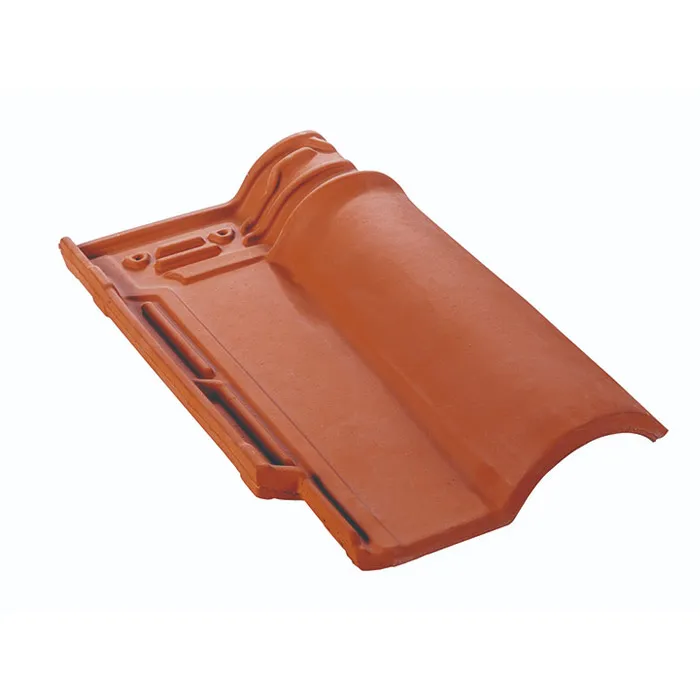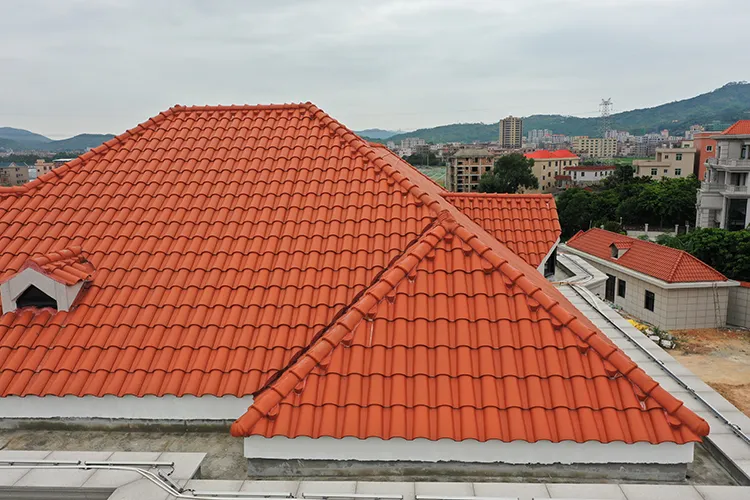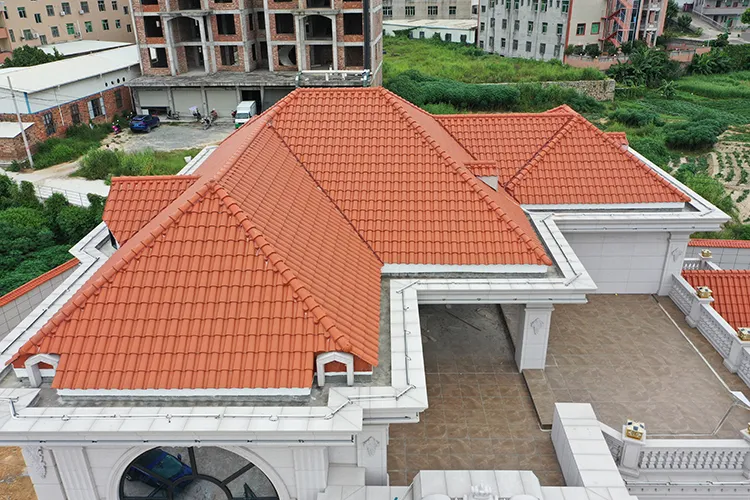Roman clay roof tiles have become a highly respected roofing material in the field of architecture with their unique design and historical background. Their elegant appearance and excellent performance make them widely used around the world. However, any building material has its advantages and disadvantages, and Roman clay tiles are no exception.
This article will explore the advantages and disadvantages of Roman clay roof tiles in detail to help readers better understand this classic building material and make wise choices in practical applications.

What are the advantages of Roman clay roof tiles?
Advantages of Roman clay roof tiles: unique aesthetics, excellent durability (lifespan of decades to hundreds of years), good waterproof performance, good thermal insulation performance, environmental protection (natural clay).
Advantage 1, unique aesthetics:
The curved design and diverse color options of Roman clay tiles make them uniquely beautiful. Whether it is traditional red, brown, or modern black and gray, Roman clay tiles can add a strong historical and cultural atmosphere and visual appeal to buildings. Its elegant curved design is suitable for a variety of architectural styles, from classical to modern, and can present excellent visual effects.
Advantage 2, excellent durability:
Roman clay tiles are made of high-quality natural clay and fired at high temperatures. Their high density and ceramic texture make the tiles extremely durable. Roman clay tiles can withstand wind and rain erosion, ultraviolet radiation and extreme climate conditions, and have a service life of decades or even hundreds of years. Compared with other roofing materials, Roman clay tiles have significant advantages in durability.
Advantage 3, good waterproof performance:
The curved design and double-layer stacking installation method of Roman clay tiles make them have good waterproof performance. The overlapping parts of the bottom tile and the cover tile form a waterproof barrier that can effectively prevent rainwater from leaking and ensure the dryness and safety of the roof. This design not only enhances the waterproof performance of the roof, but also effectively guides the flow of rainwater to prevent rainwater from accumulating on the tiles.
Advantage 4, good thermal insulation performance:
The thickness and material properties of Roman clay tiles make them have good thermal insulation performance. Tiles can effectively reflect sunlight, reduce heat transfer, and keep the interior of the building cool. In the hot summer, Roman clay tiles can significantly reduce indoor temperature, improve living comfort, reduce the frequency of air conditioning use, and save energy consumption.
Advantage 5, environmental protection:
Roman clay tiles use natural clay as raw materials, and no harmful chemicals are added during the production process. The tiles can be recycled and reused after the end of their service life, and have good environmental performance. In addition, the energy consumption in the production process of Roman clay tiles is relatively low, which reduces the impact on the environment.

What are the disadvantages of Roman clay roof tiles?
Disadvantages of Roman clay roof tiles: heavy weight, complicated installation process, easy to break and crack, high maintenance cost, and high selling price.
Disadvantage 1, heavy weight:
Roman clay tiles are heavy, and compared with other roofing materials such as asphalt tiles or metal tiles, they are more difficult and costly to install. Its weight not only puts higher requirements on the structural bearing capacity of the roof, but also increases the complexity and time of construction. In addition, during transportation and handling, due to the weight of the tiles, more manpower and equipment support may be required, increasing the construction cost.
Disadvantage 2, complicated installation process:
The installation process of Roman clay tiles is relatively complicated and requires professional technology and tools. The curved design of the tiles and the double-layer superposition installation method have high technical requirements for construction workers. During the installation process, it is necessary to ensure the alignment of the tiles and the sealing of the overlapping parts to ensure waterproof performance. Therefore, choosing an experienced and professional construction team is essential to ensure the installation quality of Roman clay tiles.
Disadvantage 3, prone to breakage and cracking:
Although Roman clay tiles have high hardness, their ceramic texture makes them relatively fragile. During the handling and installation process, if the operation is improper, they are prone to breakage and cracking. In addition, in extreme climatic conditions such as hail weather, tiles may be damaged. In order to reduce the risk of tile breakage, special care needs to be taken during construction and maintenance to avoid violent collisions and heavy objects.
Disadvantage 4, high maintenance cost:
Although Roman clay tiles have high durability, their maintenance cost is relatively high. Tiles need to be cleaned and inspected regularly to maintain their good performance and appearance. For broken tiles, they need to be replaced or repaired in time to avoid rainwater leakage and damage to the roof structure. Regular maintenance and upkeep not only increase the cost of use, but also require a certain amount of manpower and time.
Disadvantage 5, high price:
The price of Roman clay tiles is relatively high, especially high-quality and handmade tiles. Its production process is complicated, and the material cost and production cost are high, so the market price is higher than other roofing materials. For consumers with limited budgets, the high price of Roman clay tiles may become an important consideration. When choosing roofing materials, it is necessary to comprehensively consider the budget and long-term use costs to make reasonable decisions.

What are the application scenarios of Roman clay tiles?
Classical architecture
Roman clay tiles are a classic choice for classical architecture. Its curved design and natural colors can add a strong historical and cultural atmosphere to the building, and are suitable for roof decoration of churches, museums and historical sites. In these buildings, Roman clay tiles are not only a functional material, but also a cultural symbol, showing the essence of ancient architectural art.
Mediterranean style architecture
Roman clay tiles are widely used in Mediterranean-style buildings, such as traditional buildings in Italy, Greece and Spain. Its unique design and warm tones can add a strong Mediterranean style to the building, and are suitable for roof decoration of villas and resorts. In these buildings, Roman clay tiles not only provide superior waterproof and thermal insulation performance, but also add a touch of romance and elegance to the buildings.
Modern architecture
As design trends change, Roman clay tiles are gradually being used in modern buildings. Its diverse color options and elegant curve design can add a unique beauty to modern buildings. In these buildings, Roman clay tiles are not only a functional material, but also a design element, showing the innovation and diversity of modern architectural art.
Commercial buildings
In addition to residential buildings, Roman clay tiles are also increasingly used in commercial buildings. Its durability and low maintenance costs make it an ideal choice for commercial buildings such as hotels, shopping malls and office buildings. In these buildings, Roman clay tiles not only provide superior waterproof and thermal insulation performance, but also add a solemnity and style to the buildings, enhancing the commercial image and customer experience.

